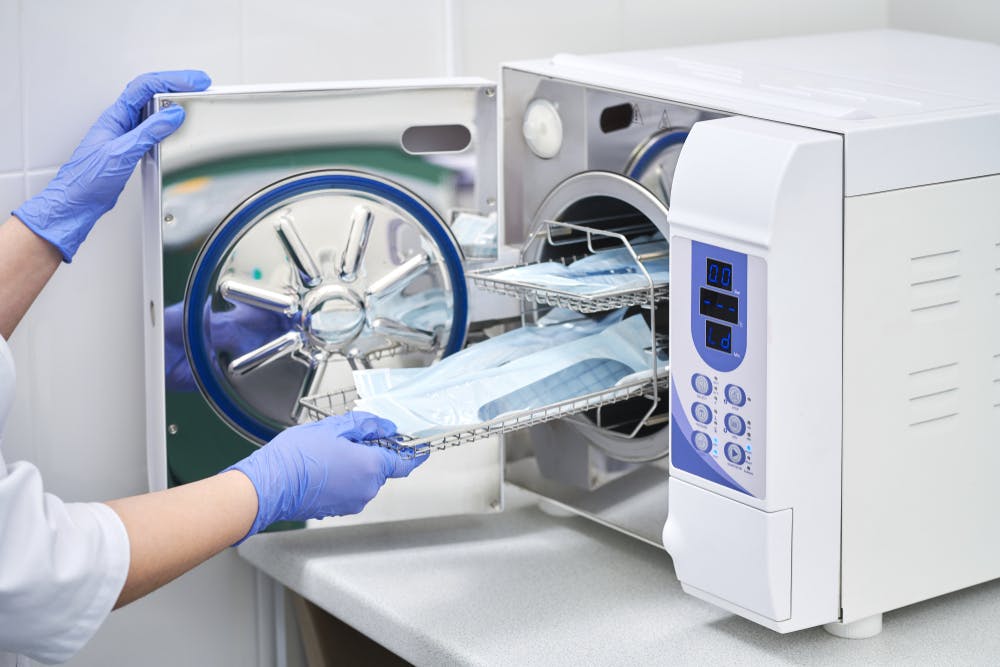Disinfection protocols are a critical part of any OB/GYN practice. You probably have procedures in place for disinfecting equipment you frequently use, such as ultrasound probes. But is your routine effective against all pathogens? Research has found that clinicians who see patients with HPV, or human papillomavirus, may need an extra level of vigilance when it comes to disinfecting their equipment.
Nanosonics estimates that around 79 million Americans are currently infected with HPV, and you may see several patients with this sexually transmitted infection (STI) in your practice. But HPV can also survive outside a host, increasing the chances of accidental transmission to noninfected patients and staff members. So how do you eliminate this possibility?
HPV Modes of Transmission
It is generally accepted that HPV is the most commonly diagnosed STI in the United States. Recent studies demonstrate that the virus can also be spread through nonsexual contact. A study in Obstetrics and Gynaecology shows that HPV may be spread through:
- Digital or oral contact and kissing.
- Infected towels or other objects.
- Transvaginal ultrasound probes and colposcopes that are not properly sanitized.
Research published in Expert Review of Anti-infective Therapy reports that HPV may also spread through fomites and retains 50 percent of its infectivity after three full days at room temperature. For OB/GYNs, this presents a very real threat to the health and safety of patients and staff.
Do All Disinfectants Kill HPV?
The Centers for Disease Control and Prevention (CDC) classifies all endocavity, transabdominal and transvaginal ultrasound probes as semicritical equipment. Since these objects are in frequent contact with nonintact skin or mucous membranes, there is a greater possibility of the virus being transmitted from patients with HPV to others.
High-level disinfection destroys or removes almost all microorganisms from medical equipment, but according to Nanosonics, using certain chemical disinfectants may not be enough to destroy HPV. Many common hospital disinfectants don't kill the virus, including:
- Glutaraldehyde 2.4-3.2 percent products.
- Ortho-phthalaldehyde 0.55 percent products.
- Isopropanol 70-95 percent products.
- Ethanol 70-85 percent products.
Practicing High-Level Disinfection
Preventing HPV transmission starts with steps to limit patient exposure to pathogens. Healthcare workers should protect patients by using transducer sheaths. Each sheath must be replaced after every patient visit, and clinicians should always protect probes with these types of barriers even when not in use to protect them from contamination. But practices should not rely on probe sheaths alone. The CDC estimates that up to 65 percent of commercially available probe covers are perforated before ever being used.
Instead, OB/GYN practices must also use personal protective equipment (PPE) and high-level disinfectants shown to kill the virus. PPE should include the use of gloves and gowns when appropriate, which should be disposed of after every patient encounter. Each exam room should be also be disinfected after every visit.
HPV is sensitive to some chemical disinfectants, including hypochlorites and formulas containing peracetic acid and silver. Additionally, automatic machines using sonicated hydrogen peroxide are especially effective against HPV-16 and HPV-18, two high-risk strains of HPV. These enclosed systems disinfect both the probe body and handle, even if the probe itself is not immersible.
Keeping Your Practice Up to Date
It's important for clinicians to regularly review current research regarding disinfection practices. This information changes regularly as researchers discover and investigate new methods and formulas. Following the most current recommended disinfection guidelines is the best way to help prevent the spread of HPV and other infections in your office.


